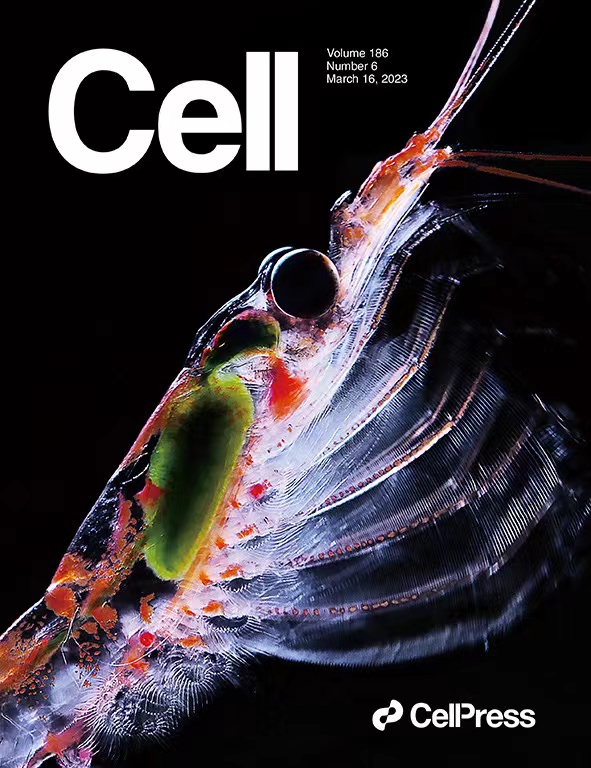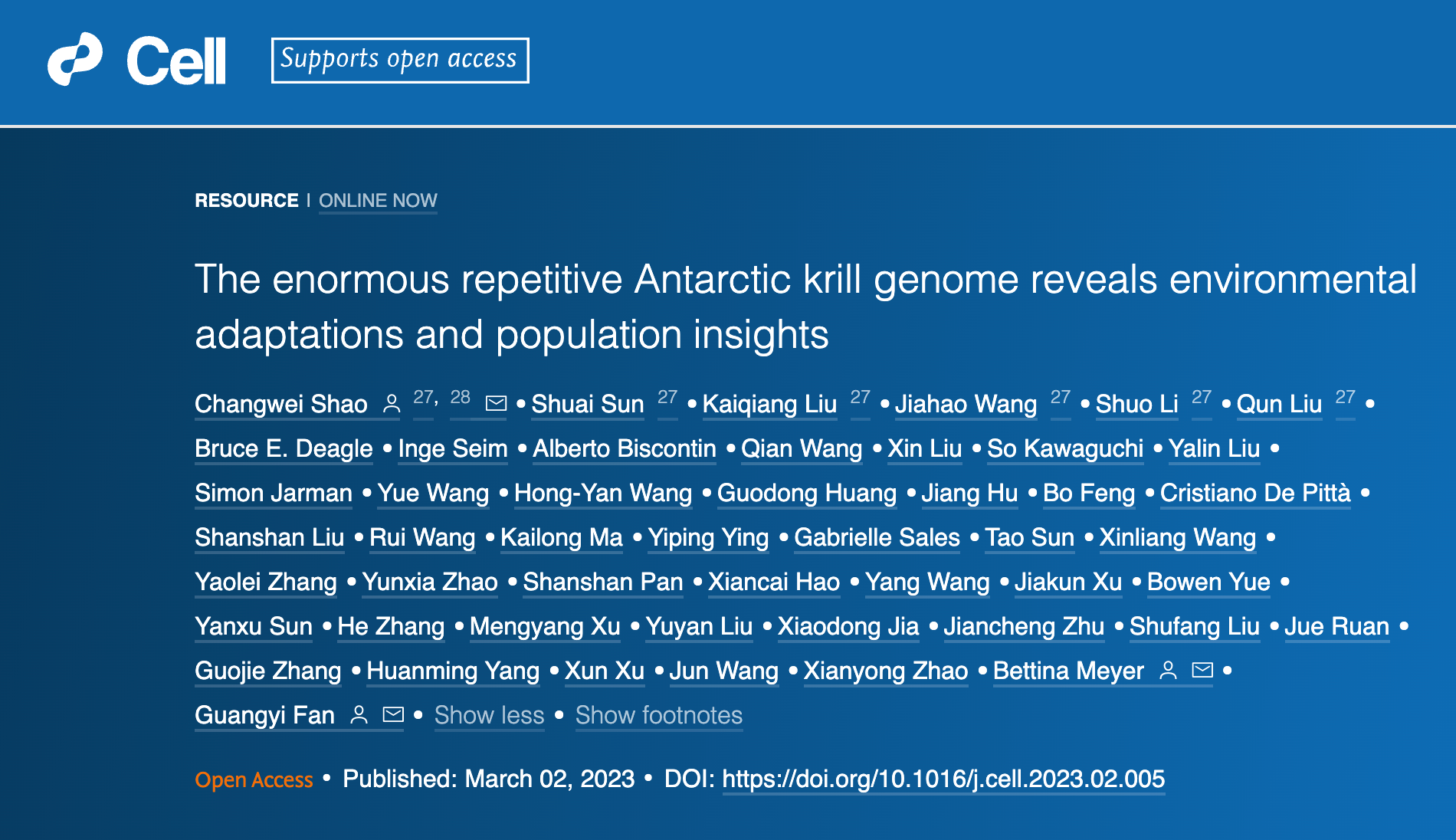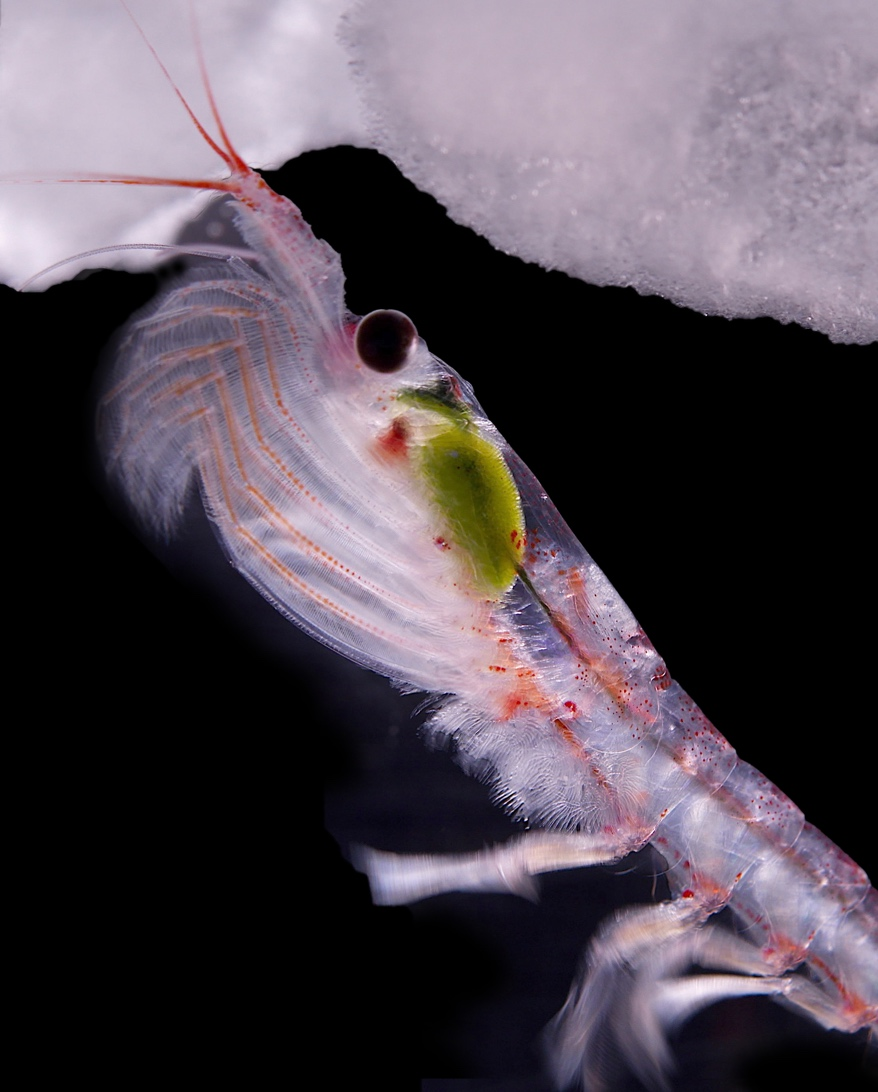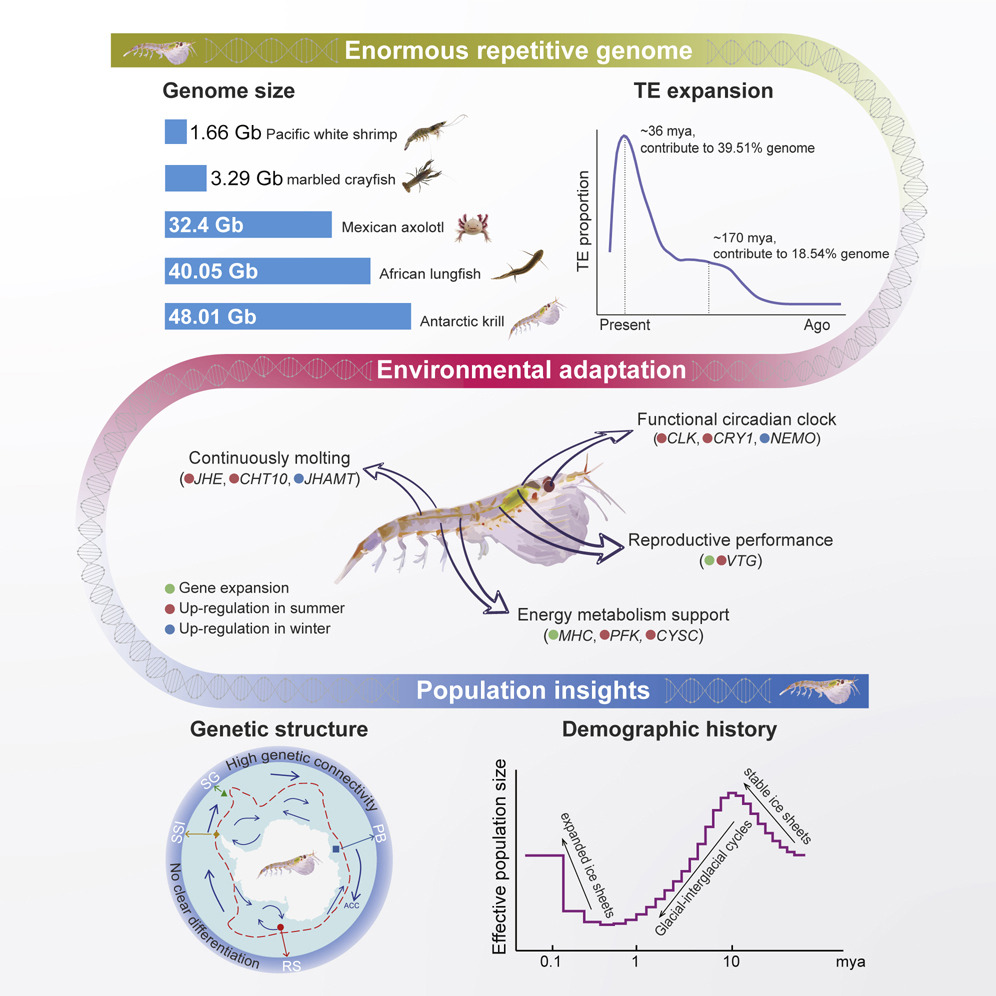Antarctic krill may be small shrimp-like crustaceans but they have the largest biomass of any wild animal species on earth, and are an indispensable part of the Southern Ocean ecosystem.
With a body length of 6cm and weighing up to two grams, this fundamental prey species punches way above its weight in its contribution to the local food chain. Depending on the Antarctic sea ice and the nutrient-dense phytoplankton and algae that comprise this habitat, Antarctic krill is considered one of the most resource-rich, multi-cellular species. Its huge biomass and vertical migration habits make it the only vehicle for transporting nutrients in the Southern Ocean ecosystem. In this sense, Antarctic krill is a critically important organism to understand.
How did they develop and adapt? Why are they so genetically complex? Is it possible to study such large genomes? All these questions have seen a breakthrough in recent research published in a cover story of Cell, where a multi-institute team used genome sequencing data to learn more about how Antarctic krill have adapted to the Southern Ocean environment over time and shaped the local ecosystem.

 The enormous repetitive Antarctic krill genome reveals environmental adaptations and population insights published as a cover story in Cell.
The enormous repetitive Antarctic krill genome reveals environmental adaptations and population insights published as a cover story in Cell.
Studying a huge genome
One of the biggest challenges in the research of Antarctic krill is the size of its genome, which is around 16x larger than that of a human. It’s also very complex, with high levels of genetic duplication, which has limited molecular-level studies of this species.
In this study, the research team was able to analyze the Antarctic krill to produce the largest animal genome sequence to date, at 48Gb. This is some 20-30% bigger than that of the African and Australian lungfish, and around 50% greater than that of the Mexican axolotl.
What makes the Antarctic krill genome stand out is the discovery that its repetitive genome sequence (tandem repeats, TR) is over 92%, which is very high and derives from two expansion events at different points in its history. Additionally, the researchers found that the frequency of TRs with long unit length (> 50 bp) in the Antarctic krill genome is remarkably higher than those in other malacostracan crustaceans.
Investigating adaptability
How have Antarctic krill adapted to the harsh climate of the polar south? What is enabling or driving this ability?
The research team found that Antarctic krill have a total of 25 significantly expanded gene families, with six of these able to manage the krill’s continuous molting, or shedding of the outer layers as the organism grows, and energy metabolism, generally supporting its lifecycle in the Antarctic environment.
The expression levels of the molting-related and energy metabolism-related genes are significantly different between the winter and summer seasons. This is consistent with previous studies of Antarctic krill molting in contexts of high temperatures, long periods of light, and heightened food supply, and suggests a genomic innovation in the krill’s molting cycle and reproduction that allowed it to adapt to times of increased food availability in the Southern Ocean.
Notably, the study was also able to investigate the krill’s biological clock, unlocking insights into the basic genetic structure of its circadian rhythm. 625 genes thought to be regulated by the krill’s biological clock were screened through genomic analysis. Comparing with other organisms including mammals and fruit flies, the study found that the main circuits of the krill’s circadian rhythm were consistent with these other species, while several genes in the feedback pathway showed different expression levels.
In terms of adaptability, these latter genes suggest that Antarctic krill may have evolved physical qualities and behavioral patterns that enabled them to conserve energy and survive in very low temperatures and across different light conditions.
 Antarctic krill (Photo credit: Simon Payne from Australian Antarctic Division)
Antarctic krill (Photo credit: Simon Payne from Australian Antarctic Division)
Observing population dynamics
To gain a better understanding of krill populations from a genetic perspective, 75 individual organisms were collected from four Southern ocean regions with high biomass. The research team wanted to answer three key questions:
First, are Antarctic krill genetically homogenous or diverse? A total of 365 million SNPs were identified through genome sequencing and comparison for this purpose. The study found that the nucleotide diversity levels of the four groups were similar, and the test for the relationship between geographic distance and genetic distance showed that there was very little distinction between groups. Moreover, the research team observed a high degree of gene flow between the four groups, suggesting a significant degree of genetic connectivity among Antarctic krill over a large geographic range.
Second, is natural selection effective for Antarctic krill given their large population? Based on a set of 10 environmental factors collected over the past two decades from four distinct locations in the Southern Ocean, the study found that the genetic differentiation of different Antarctic krill populations is significantly related to their environmental distance. This was further evidenced by the detection of 387 adaptive SNPs potentially related to the krill’s environment, which would underscore the claim that environmental selection is playing an important role in the genetic structure of different populations.
Third, has the Antarctic krill’s effective population size changed over time? Using various methods, the research team discovered that the Antarctic krill’s population decreased sharply some 10 million years ago, coinciding with severe climate events during the Pleistocene, or “Ice Age”. Some time later, around 100,000 years ago, the Antarctic krill populations expanded due to a flourishing of sea ice, which is their natural habitat.
 Key findings and conclusions of the study. (Image Source: Cell Press)
Key findings and conclusions of the study. (Image Source: Cell Press)
Laying the foundation for future research
This study used genome sequencing data to analyze the molecular mechanisms of important Antarctic krill traits, including growth, reproduction, energy metabolism, and gene adaptation to extreme environments. The findings provide a theoretical basis for future research as well as the practical utilization of resources to preserve krill habitats and the marine ecosystem that depends on them.
“In the context of the entire Antarctic food chain, the role of Antarctic krill is significant and deserves protection both for the continuation of the local ecosystem as well as for conducting further research into its genetic history and lifecycle,” said Dr. Guangyi Fan, co-corresponding author, researcher at BGI-Research.
Dr. Changwei Shao, co-first and co-corresponding author, researcher at the Chinese Academy of Fishery Sciences also commented on the study as having “a great impact on global fishing and commerce, and could have meaningful implications for human society over time as we continue to build on the findings.”
This study was performed by a multi-national team of researchers from China, Denmark, Australia, Italy, and Germany, and carried out by BGI-Research Qingdao, Yellow Sea Fisheries Research Institute of the Chinese Academy of Fishery Sciences (CAFS), the Alfred Wegener Institute, the Australian Commonwealth Scientific and Industrial Research Organization, and other institutes. This research was supported by the National Key R&D Program of China, Marine Science and Technology Fund of Shandong National Laboratory of Marine Science and Technology (Qingdao), the Central Public-interest Scientific Institution Basal Research Fund, CAFS, among others.
Read about the research: https://doi.org/10.1016/j.cell.2023.02.005
(This article was updated on March 16, 2023.)



